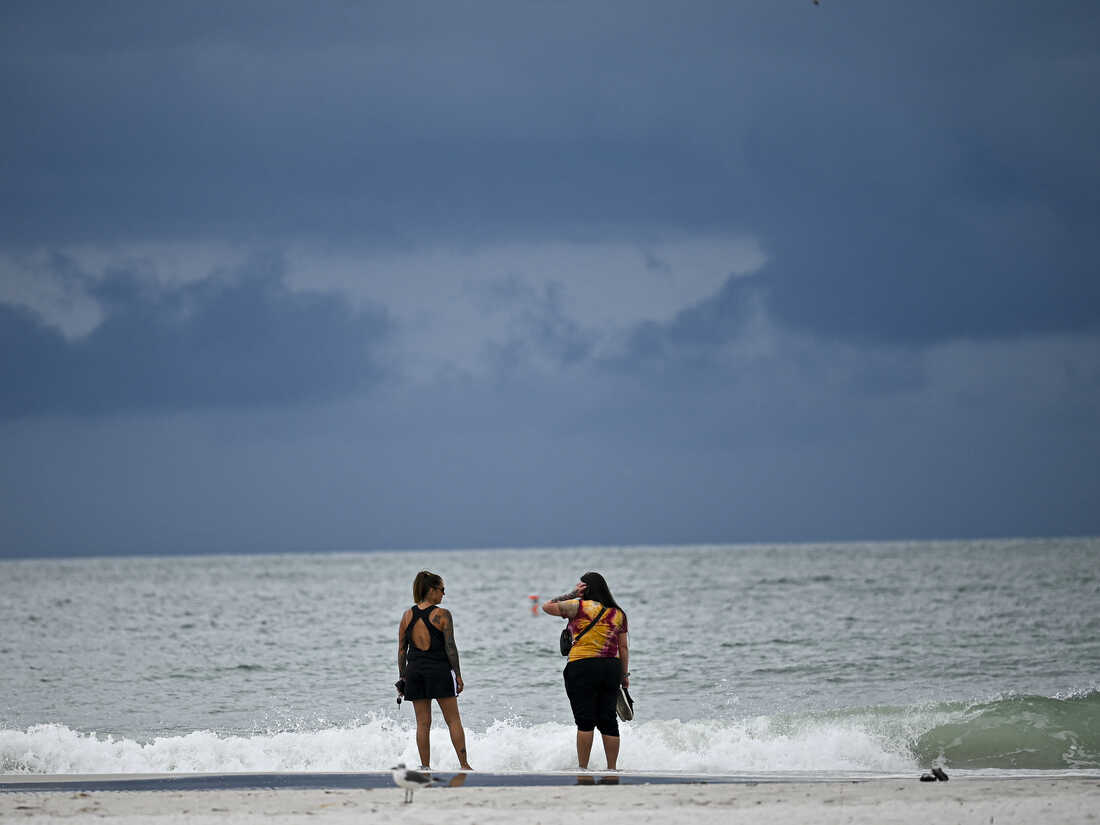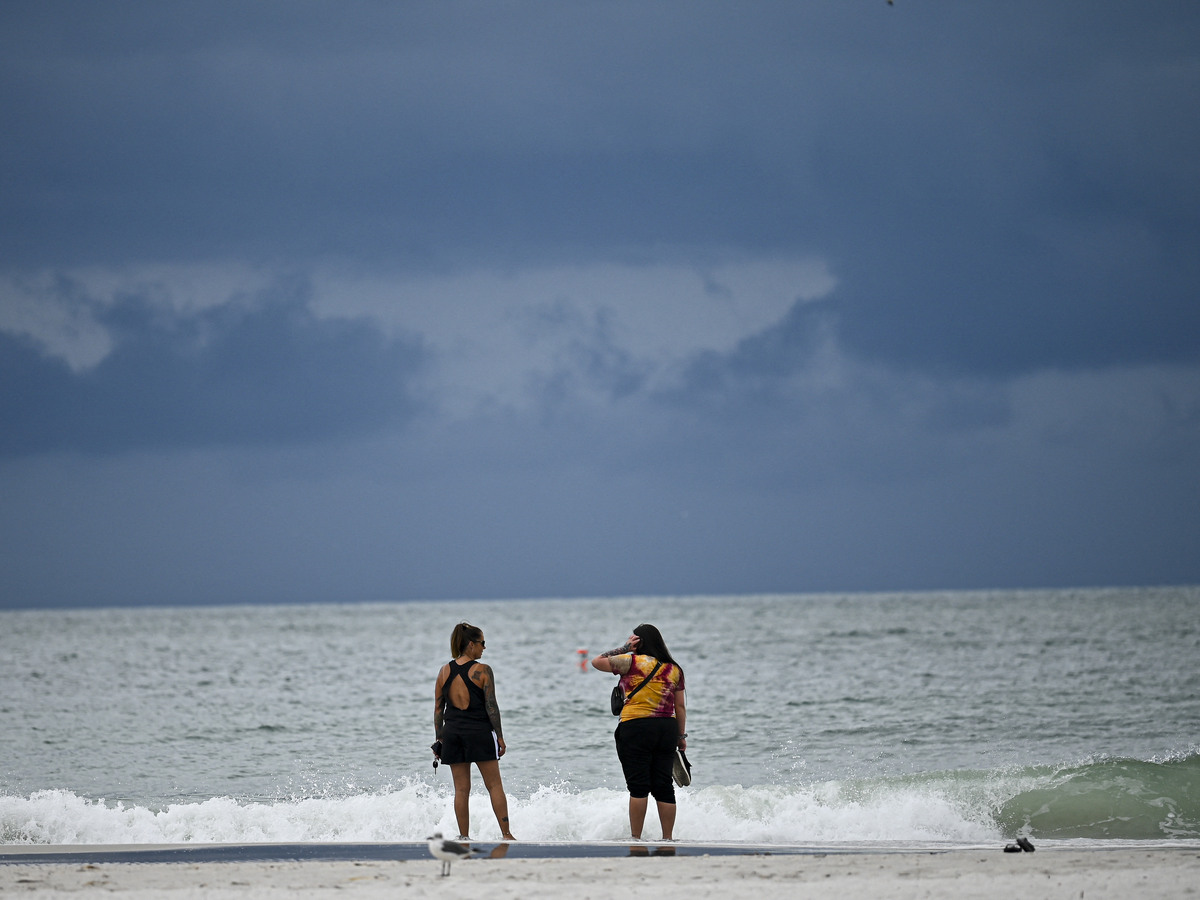Idalia strengthens and is now predicted to hit Florida as a Category 4 hurricane : NPR


People are shown at the beach in Tampa, Florida, on Aug. 29, 2023 as the city prepares for Hurricane Idalia.
MIGUEL J. RODRIGUEZ CARRILLO/Miguel J. Rodriguez Carrillo/AFP
hide caption
toggle caption
MIGUEL J. RODRIGUEZ CARRILLO/Miguel J. Rodriguez Carrillo/AFP

People are shown at the beach in Tampa, Florida, on Aug. 29, 2023 as the city prepares for Hurricane Idalia.
MIGUEL J. RODRIGUEZ CARRILLO/Miguel J. Rodriguez Carrillo/AFP
Hurricane Idalia continued to intensify late Tuesday as forecasters raised the anticipated strength of the storm when it makes landfall on Florida’s Gulf Coast.
In its latest advisory at 11 p.m. ET, the National Hurricane Center said the storm remained a Category 2 hurricane with winds of 110 mph. That’s 1 mph shy of “major” Category 3 status. The NHC said Idalia is now forecasted to be at Category 4 strength at landfall on Wednesday with winds of at least 130 mph.
Additionally, forecasters again increased the storm surge potential to as high as 16 feet from the Wakulla/Jefferson County line to Yankeetown, Fla.

Swells continued to roil the Gulf of Mexico. A buoy (#42099) near the storm reported a wave height of nearly 34 feet.
Idalia has strengthened 40 mph since 2 a.m. ET Tuesday. That qualifies as a “rapid intensification” which the NHC defines as an increase in the maximum sustained winds of at least 35 mph in a 24-hour period. Such a rapid increase in wind speed used to be a rarity, but is happening more frequently, in part, because of climate change.
Even as the storm moves north through the Gulf of Mexico, local officials are warning residents to remain vigilant. In Tampa, for instance, city leaders are warning the worst of what could be a 4-to-6-foot storm surge could happen on Wednesday – well after the storm has passed.
In a briefing, Florida Gov. Ron DeSantis warned Floridians to “be ready for impact,” in discussing tomorrow’s pending arrival of Hurricane Idalia in the Big Bend region.
Previous forecasts had called for a 10-to-15-foot storm surge. That is several feet higher than what was predicted last year during Hurricane Ian, which walloped and decimated Fort Myers Beach. “This could have really, really significant storm surge on those coastal areas alongside the Big Bend. Storm surge of this magnitude is not something we’ve seen on this part of Florida in any of our lifetimes,” DeSantis said.
The Big Bend is where the Florida peninsula and panhandle come together and is a rural and low-lying area – punctuated with quaint and old-time fishing villages and tiny beach communities.
“We are going to experience historical flood surge up into the Big Bend area,” said Kevin Guthrie, executive director of the Florida Division of Emergency Management. “This is nothing to be messing around with.”
Idalia is already sending heavy rain bands up the South Florida coast as the storm moves through the hot, jacuzzi-like temperatures of the Gulf of Mexico. Water levels are already rising along many parts of the Gulf coast. That warm water is helping fuel an expected rapid intensification.
#Idalia #strengthens #predicted #hit #Florida #Category #hurricane #NPR



